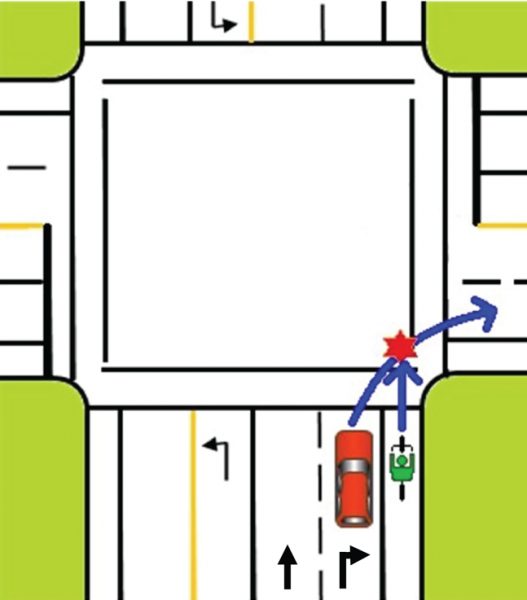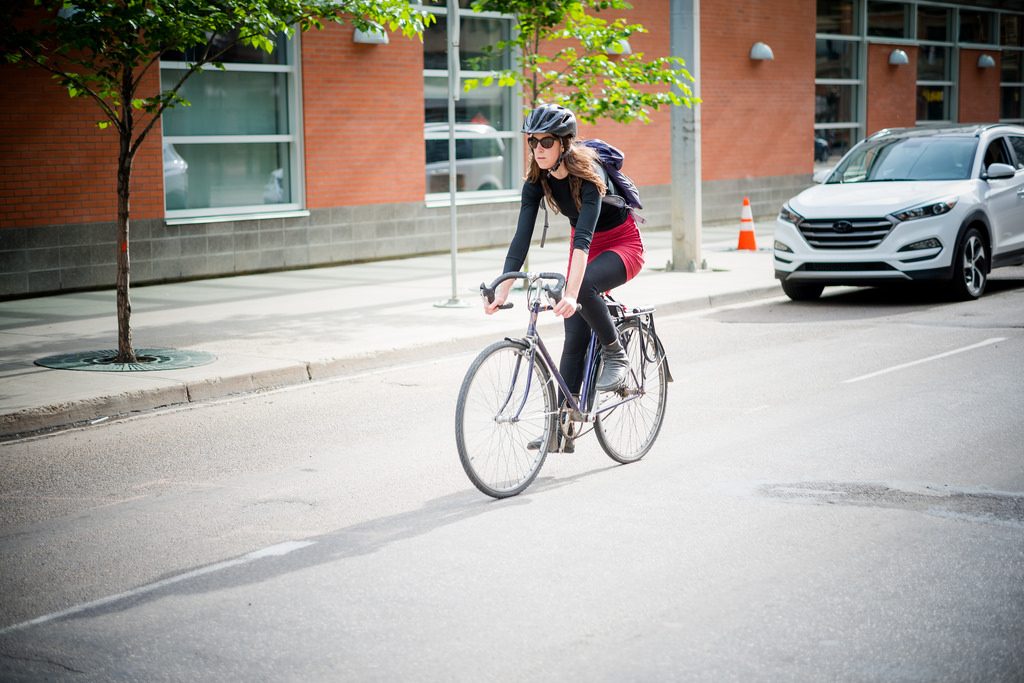April 25, 2019
With more than 50 miles of off-street trails, a silver-level rating by the League of American Bicyclists and a variety of sustainable riding events throughout the year, it’s safe to say Flagstaff is a bike-friendly town.
But bike safety here, as in cities of all sizes throughout the world, remains a looming concern. With an increase in the popularity of biking, communities are investing more in bicycle infrastructure, and transportation professionals must address the inevitable conflicts that occur when multiple modes of transportation converge in the same spaces.
Edward Smaglik, professor of civil engineering at Northern Arizona University, has been working with Portland State University since 2014 on a project to help improve guidance for the implementation of countermeasures for bicycle-motor vehicle conflicts at signalized intersections.
As one might guess, most bicycle-vehicle collisions occur at intersections. A common accident observed at intersections is a “right-hook”—when a right- or left-turning vehicle collides with a through bicyclist.
Common methods to improve bicycle safety include roadway design and traffic signal treatments, but studies on the latter are limited, and cities do not have the funds to invest in treatments without substantial research on the matter. In the instance of a “right-hook,” allowing a right-turning vehicle at a different time can enhance safety for cyclists and pedestrians making a through movement on the same side of the street.

Smaglik’s study proposed various signal timing treatments, including: exclusive phasing—separating vehicle and bicycle into different phases; leading bicycle intervals (LBI)—restricting traffic for a few seconds at the beginning of a phase; and split-LBI—restricting right turns for a few seconds at the beginning of a phase, with immediate and concurrent green for bikes, pedestrians and through vehicles.
“I think the poor choices made by a small group within the biking community provide an avenue for those that don’t cycle to discount the legitimacy of cycling as a mode of transportation, thereby reducing resources allocated to bicycle infrastructure,” he said. “But biking is an important sustainable mode of transportation, even for those folks who have no desire to ever ride a bicycle. If everyone ditched their vehicle for a bicycle, the environment improves for all. Work such as this, which provides guidance for practitioners to implement countermeasures that improve the cyclists’ experience, move us toward that end.”
The study evaluated various signal timing treatments using video-based and microsimulation analyses. For the video-based analysis, footage was collected from intersections in New York City, Portland and Phoenix.
The results of the presented study recommend mixing zones or traditional concurrent signal timing for areas with low volumes of bicycles and turning vehicles. Medium- to high-volume areas would benefit from LBI or split-LBI treatments, but collision risks still exist after the release of turning vehicles during the later portion of a green phase. Exclusive bike phases are recommended at high-volume intersections to minimize or eliminate windows of conflict, but the greatest delays are experienced by all users with this type of signal treatment.
“I would like to see an increase in implementation of countermeasures for bicycle-motor conflicts at signalized intersections,” Smaglik said. “By providing implementation guidance based upon empirical data, my hope is that cities that are not currently deploying such treatments will be encouraged to implement them.”
Smaglik has worked on a handful of multimodal projects over the years, including one funded by NAU where his team worked with the City of Flagstaff on an effort that resulted in bicycle-motor vehicle conflict zones along Beaver Street being painted green and another with Portland State University that provided guidance for managing agencies on the use of alternate signal control methods for serving pedestrians at signalized intersections.
Carly Banks | NAU Communications
(928) 523-5582 | carly.banks@nau.edu




